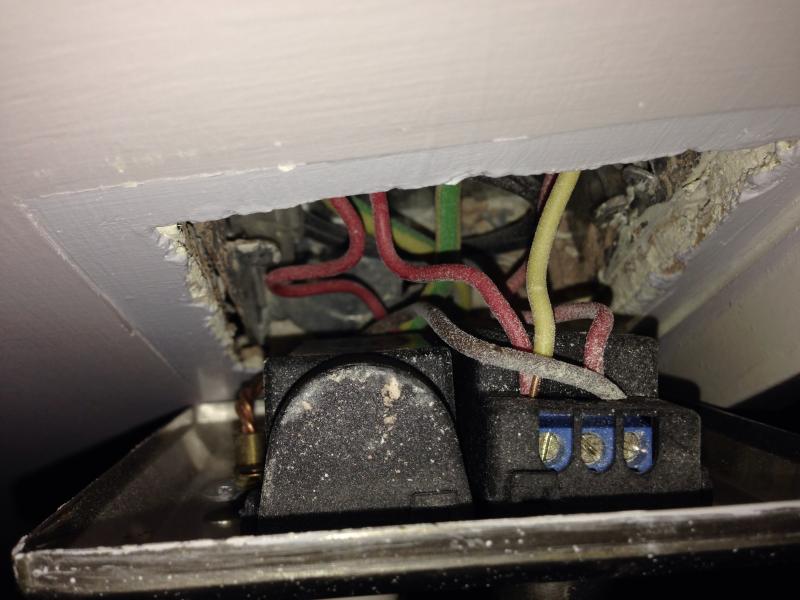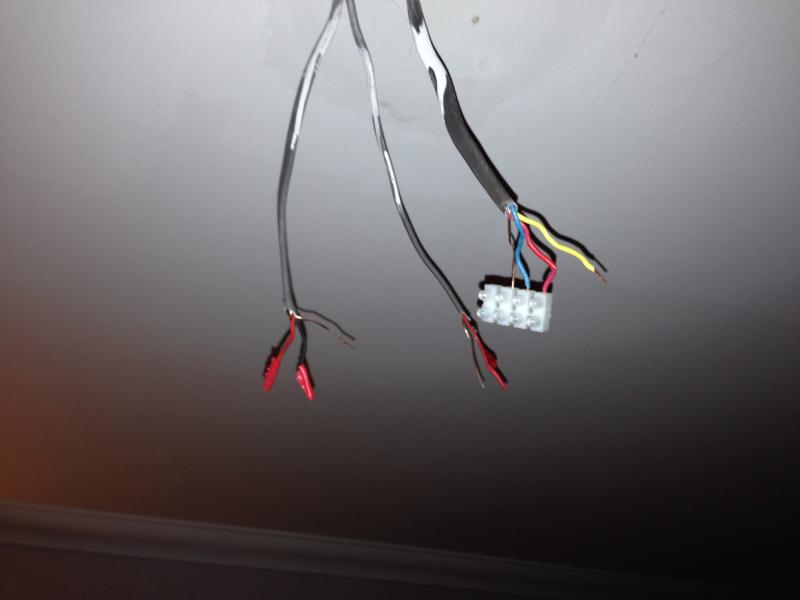Hi there
Could anyone tell me if the attached picture is a looped in switch setup. I am confused as there appears to be a loop in ceiling also.
The pic is of a dimmer, left switch controls 2 wall lights, right controls 2 ceiling lights. There appears to be a 3 core and earth to ceiling i am not certain if this was because sometime in past ceiling lights were independent or it is to do with loop.
The yellow wire is in common, the brown wire connecting the two switches is in L1 in both.
Any help would be greatly appreciated.
Could anyone tell me if the attached picture is a looped in switch setup. I am confused as there appears to be a loop in ceiling also.
The pic is of a dimmer, left switch controls 2 wall lights, right controls 2 ceiling lights. There appears to be a 3 core and earth to ceiling i am not certain if this was because sometime in past ceiling lights were independent or it is to do with loop.
The yellow wire is in common, the brown wire connecting the two switches is in L1 in both.
Any help would be greatly appreciated.




